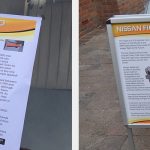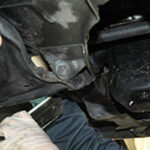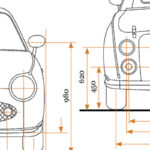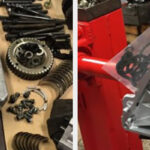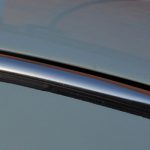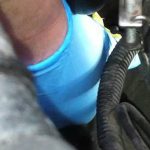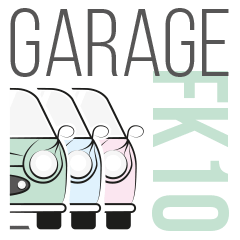Lubricants & Fluids Specifications
Below we have listed both the lubricants and fluids recommended by Nissan. Pay attention to the specification and replacement frequencies. To help we have also included the volume and how to fill up too.
THE PICTURE BELOW SHOWS THE LOCATIONS OF ENGINE OIL (A), ENGINE DIPSTICK (B), POWER STEERING (C), BRAKE FLUID (I) AND RADIATOR (K)
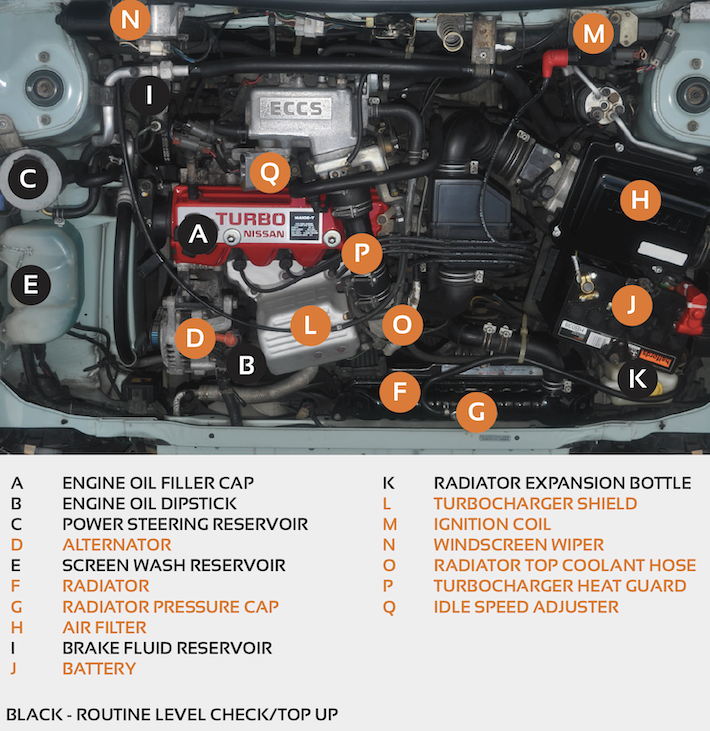
More Than A Top Up?
It’s also important to remember, that if you need more than a small top-up, you should ask yourself why and check for faults/leaks.
ENGINE OIL
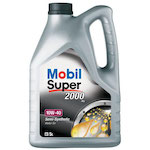 Turn on the engine and run for a short while. To get a true reading make sure you are parked on level ground. Check the oil level by removing the dipstick. Turn the engine off and check that the level of the oil is between the “H” and “L”. Top up the oil if required. To refill the engine oil, remove the engine oil cap and add.
Turn on the engine and run for a short while. To get a true reading make sure you are parked on level ground. Check the oil level by removing the dipstick. Turn the engine off and check that the level of the oil is between the “H” and “L”. Top up the oil if required. To refill the engine oil, remove the engine oil cap and add.
REPLACE THE ENGINE OIL EVERY 10,000km OR EVERY 12 MONTHS
- Semi-synthetic oil 10W30 or 10W40 (e.g. Mobil Super)
- Fully synthetic oil 10W40 or 5W40 (e.g. Mobil 1)
- Refilling capacity – approx 3 litres
GEARBOX OIL
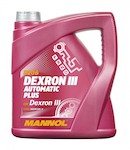 The gearbox dipstick is very hard to locate, The Figaro Shop have created a video which shows how to find the dipstick and what you need to top up the gearbox.
The gearbox dipstick is very hard to locate, The Figaro Shop have created a video which shows how to find the dipstick and what you need to top up the gearbox.
- Automatic Transmission Fluid (ATF) to specification Dexron 3, (usually indicated Dexron 111 on the pack), (Dexron 2 is acceptable if 3 is not available)
- Capacity – approx 6.5 litres
REPLACE THE GEARBOX ENGINE OIL EVERY 20,000km OR EVERY 24 MONTHS
Locating the filling cap
The gearbox filling cap is hard to see when looking into the engine. The Figaro Shop has shot a helpful video that will help you locate it.
POWER STEERING FLUID
 To check the level of the power steering fluid, remove the cap, wipe the dipstick with a rag and replace it. Remove the cap again and check the level of the fluid between the two arrows. Top up and repeat.
To check the level of the power steering fluid, remove the cap, wipe the dipstick with a rag and replace it. Remove the cap again and check the level of the fluid between the two arrows. Top up and repeat.
- Automatic Transmission Fluid (ATF) to specification Dexron3 (usually indicated Dexron111 on the pack). (Dexron2 is acceptable if 3 is not available)
- Dextron fluids can be red (usually) or golden and can safely be mixed.
BRAKE FLUID
 Check out the fluid in the reservoir tank it is up to the “MAX’ level stated on the side of the reservoir. To top up, simply remove the cap and fill it up.
Check out the fluid in the reservoir tank it is up to the “MAX’ level stated on the side of the reservoir. To top up, simply remove the cap and fill it up.
- Fluid to DOT 3 or 4 specifications (DOT 2 is also acceptable)
Under no circumstances should silicon-based fluid to DOT 5 specification be used
RADIATOR COOLANT
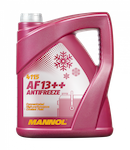 Check the level by looking at the small expansion tank which is located on the left of the radiator. it should be between the “MAX” and “MIN” levels on the tank. The coolant capacity is 4 Litres. Only open the radiator cap when there is no coolant in the reservoir tank and need to refill the water coolant into the radiator. To avoid being scalded, never fill the radiator when the engine is hot/warm.
Check the level by looking at the small expansion tank which is located on the left of the radiator. it should be between the “MAX” and “MIN” levels on the tank. The coolant capacity is 4 Litres. Only open the radiator cap when there is no coolant in the reservoir tank and need to refill the water coolant into the radiator. To avoid being scalded, never fill the radiator when the engine is hot/warm.
- Antifreeze based on mineral inhibitors – IAT (Inorganic Acid Technology) is recommended. These are designed for year-round use in any modern cooling systems containing copper, brass and aluminium components for which the use of an ethylene-glycol-based antifreeze is recommended.
Under no circumstances should not use anything with OAT ORGANIC ADDITIVE TECHNOLOGY or NAP Nitrates, Amines, Phosphates
Ready Mixed
We recommend using a pre-mixed coolant. The reason is if you use tap water it can contain minerals and hardness which can cause a build-up within the system. Distilled and de-ionised water have their issues too.
There is an excellent page on All You Need To Know About Coolants – Coolants Technology, Function, & Applications Learn more/read now
GENERAL LUBRICATION
- Engine oil
- Brake contact parts (not hydraulic parts) Copper-based grease or Mintex Cera Tec
BEARINGS AND GENERAL GREASING
Lithium-based high-temperature grease
